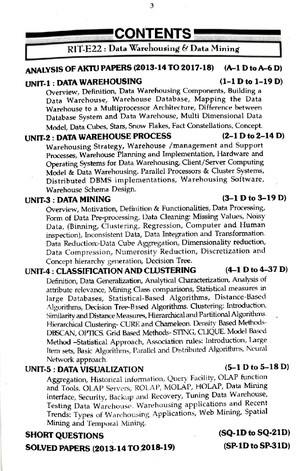- Information
- AI Chat
Deep Learning PPT - full notes
b.tech (rme 701)
Preview text
Topics to be Covered
Introduction: Deep Learning
Deep and Shallow Neural Network
Machine Learning vs Deep Learning
Deep Learning Models
Logistic Regression
Gradient Descent and Types
Regularization
What is Deep Learning?
Deep Learning is the subset of machine learning or can be said as a special kind of machine learning.
It works technically in the same way as machine learning does, but with different capabilities and approaches.
Deep learning models are capable enough to focus on the accurate features themselves by requiring a little guidance from the programmer.
Deep learning is implemented with the help of Neural Networks, and the idea
behind the motivation of neural network is the biological neurons, which is
nothing but a brain cell.
Architectures
Shallow neural network:
The Shallow neural network has only one hidden layer between the input and output.
Deep Neural Networks It is a neural network that incorporates the complexity of a certain level, which means several numbers of hidden layers are encompassed in between the input and output layers. They are highly proficient on model and process non-linear associations.
Machine Learning Vs Deep Learning
Machine Learning and Deep Learning are the two main concepts of Data Science and the subsets of Artificial Intelligence.
Most of the people think the machine learning, deep learning, and as well as artificial intelligence as the same buzzwords. But in actuality, all these terms are different but related to each other.
How Deep Learning Works?
We can understand the working of deep learning with the same example of identifying cat vs. dog. The deep learning model takes the images as the input and feed it directly to the algorithms without requiring any manual feature extraction step. The images pass to the different layers of the artificial neural network and predict the final output.
Which one is Select – ML or DL
Deep Learning Applications
Self-Driving Cars
Voice Controlled Assistance
Automatic Image Caption Generation
Automatic Machine Translation
Logistic Regression
Logistic regression is one of the most popular Machine Learning algorithms, which comes under the Supervised Learning technique. It is used for predicting the categorical dependent variable using a given set of independent variables.
Logistic regression predicts the output of a categorical dependent variable. Therefore the outcome must be a categorical or discrete value. It can be either Yes or No, 0 or 1, true or False, etc. but instead of giving the exact value as 0 and 1, it gives the probabilistic values which lie between 0 and 1.
Logistic Regression is much similar to the Linear Regression except that how
they are used. Linear Regression is used for solving Regression problems, whereas Logistic regression is used for solving the classification problems.
Logistic Function (Sigmoid Function)
The sigmoid function is a mathematical function used to map the predicted values to probabilities.
It maps any real value into another value within a range of 0 and 1.
The value of the logistic regression must be between 0 and 1, which cannot go beyond this limit, so it forms a curve like the "S" form. The S-form curve is called the Sigmoid function or the logistic function.
Types of Logistic Regression
On the basis of the categories, Logistic Regression can be classified into three types:
Binomial: In binomial Logistic regression, there can be only two possible types of the dependent variables, such as 0 or 1, Pass or Fail, etc.
Multinomial: In multinomial Logistic regression, there can be 3 or more possible unordered types of the dependent variable, such as "cat", "dogs", or "sheep”.
Ordinal: In ordinal Logistic regression, there can be 3 or more possible ordered types of dependent variables, such as "low", "Medium", or "High".
Gradient Descent
Gradient Descent
How can we avoid local minima and always try and get the optimized weights based on global minima?
Different types of Gradient descents are
Batch Gradient Descent
Stochastic Gradient Descent
Mini batch Gradient Descent
Stochastic Gradient Descent
In stochastic gradient descent we use a single data point or example to calculate the gradient and update the weights with every iteration.
We first need to shuffle the dataset so that we get a completely randomized dataset. As the dataset is randomized and weights are updated for each single example, update of the weights and the cost function will be noisy jumping all over the place
Mini Batch Gradient Descent
Mini-batch gradient is a variation of stochastic gradient descent where instead of single training example, mini-batch of samples is used.
Mini batch gradient descent is widely used and converges faster and is more stable.
Batch size can vary depending on the dataset.
As we take a batch with different samples, it reduces the noise which is variance of the weight updates and that helps to have a more stable converge faster.
Deep Learning PPT - full notes
Course: b.tech (rme 701)
University: GL Bajaj Institute of Technology and Management










